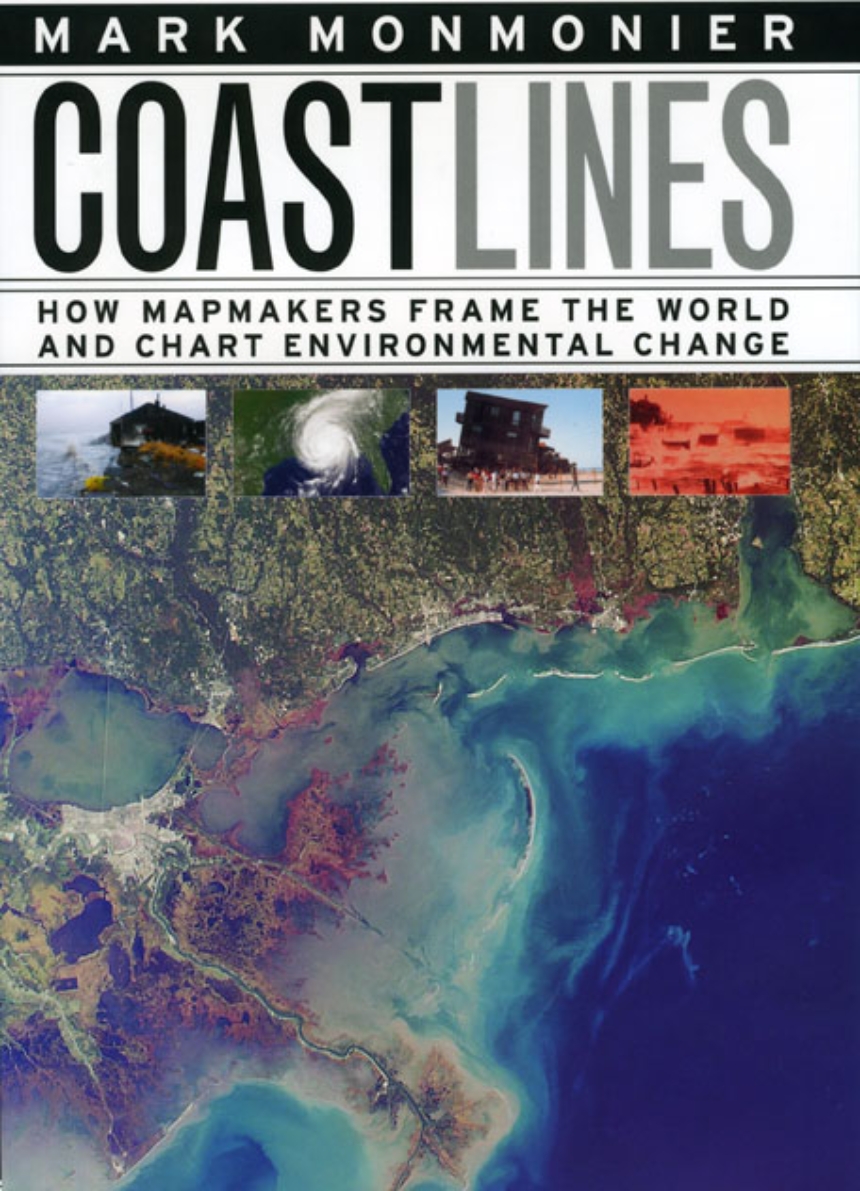Coast Lines
How Mapmakers Frame the World and Chart Environmental Change
9780226534039
9780226534046
Coast Lines
How Mapmakers Frame the World and Chart Environmental Change
In the next century, sea levels are predicted to rise at unprecedented rates, causing flooding around the world, from the islands of Malaysia and the canals of Venice to the coasts of Florida and California. These rising water levels pose serious challenges to all aspects of coastal existence—chiefly economic, residential, and environmental—as well as to the cartographic definition and mapping of coasts. It is this facet of coastal life that Mark Monmonier tackles in Coast Lines. Setting sail on a journey across shifting landscapes, cartographic technology, and climate change, Monmonier reveals that coastlines are as much a set of ideas, assumptions, and societal beliefs as they are solid black lines on maps.
Whether for sailing charts or property maps, Monmonier shows, coastlines challenge mapmakers to capture on paper a highly irregular land-water boundary perturbed by tides and storms and complicated by rocks, wrecks, and shoals. Coast Lines is peppered with captivating anecdotes about the frustrating effort to expunge fictitious islands from nautical charts, the tricky measurement of a coastline’s length, and the contentious notions of beachfront property and public access.
Combing maritime history and the history of technology, Coast Lines charts the historical progression from offshore sketches to satellite images and explores the societal impact of coastal cartography on everything from global warming to homeland security. Returning to the form of his celebrated Air Apparent, Monmonier ably renders the topic of coastal cartography accessible to both general readers and historians of science, technology, and maritime studies. In the post-Katrina era, when the map of entire regions can be redrawn by a single natural event, the issues he raises are more important than ever.
Whether for sailing charts or property maps, Monmonier shows, coastlines challenge mapmakers to capture on paper a highly irregular land-water boundary perturbed by tides and storms and complicated by rocks, wrecks, and shoals. Coast Lines is peppered with captivating anecdotes about the frustrating effort to expunge fictitious islands from nautical charts, the tricky measurement of a coastline’s length, and the contentious notions of beachfront property and public access.
Combing maritime history and the history of technology, Coast Lines charts the historical progression from offshore sketches to satellite images and explores the societal impact of coastal cartography on everything from global warming to homeland security. Returning to the form of his celebrated Air Apparent, Monmonier ably renders the topic of coastal cartography accessible to both general readers and historians of science, technology, and maritime studies. In the post-Katrina era, when the map of entire regions can be redrawn by a single natural event, the issues he raises are more important than ever.
224 pages | 85 halftones | 6 x 9 | © 2008
Earth Sciences: Oceanography and Hydrology
Geography: Cartography, Environmental Geography
Reviews
Table of Contents
Preface and Acknowledgments
1 Depiction and Measurement
2 Definitions and Delineations
3 New Worlds and Fictitious Islands
4 Triangles and Topography
5 Overhead Imaging
6 Electronic Charts and Precise Positioning
7 Global Shorelines
8 Baselines and Offshore Borders
9 Calibrating Catastrophe
10 Rising Seas, Eroding Surge
11 Close-ups and Complexity
12 Epilogue
2 Definitions and Delineations
3 New Worlds and Fictitious Islands
4 Triangles and Topography
5 Overhead Imaging
6 Electronic Charts and Precise Positioning
7 Global Shorelines
8 Baselines and Offshore Borders
9 Calibrating Catastrophe
10 Rising Seas, Eroding Surge
11 Close-ups and Complexity
12 Epilogue
Notes
Bibliography
